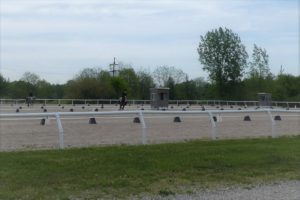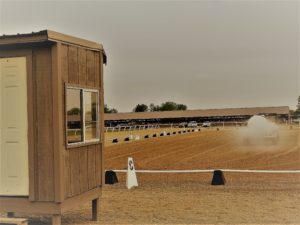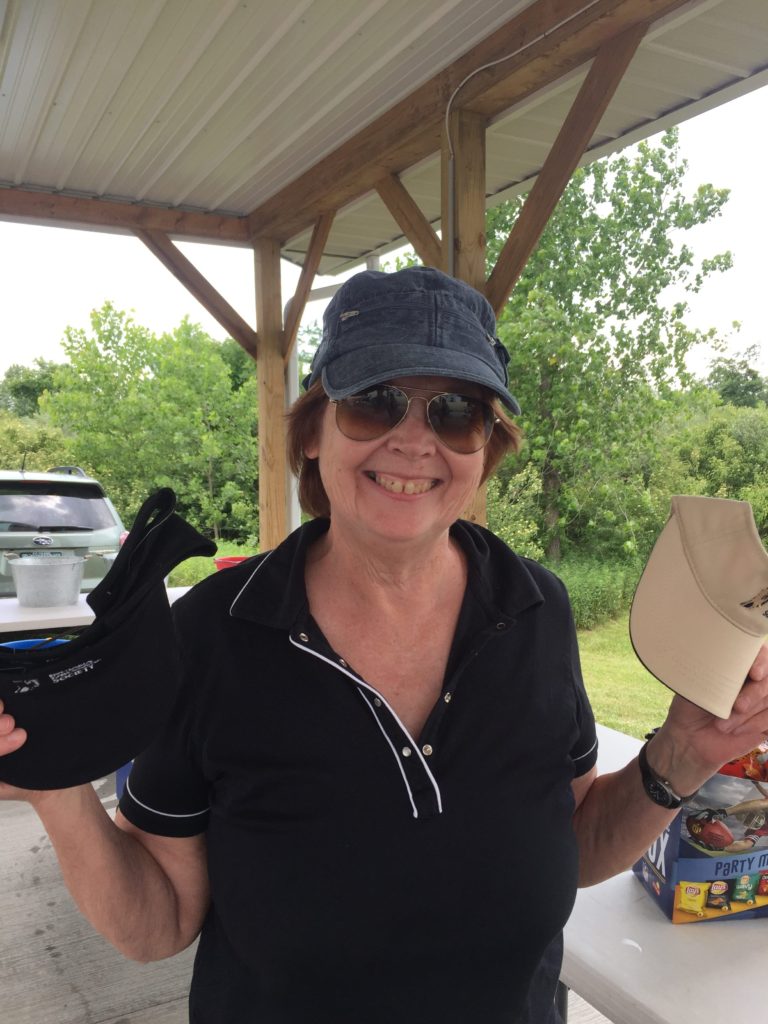Puttin’ on the Show: An Interview with Indy Classic event coordinator, Bonna McCuiston
For most of us, the Indy Classic Dressage Show becomes a reality when we send in our entries and block off the weekend on our calendars. For the show coordinator, they are thinking of the show in November of the previous year. I had a chance to sit down with the current Indy Classic event coordinator, volunteer and board member, Bonna McCuiston, to get a better understanding of what it takes for the rest of us to be able to “A, Enter working trot” every June. Bonna has been the Indy Classic event coordinator since 2004.
“As soon as the IDS Fall Ride Offs in late September, early October are completed,” Bonna explains, “I am setting up the next year contracts with the Hoosier Horse Park (HHP). While we are guaranteed our weekend, the contracts have to be in place by November 1st.”
Securing the judges also starts in November. “Because we have a limited number of judges, the earlier we start soliciting, the better chance we have of finding judges who are available during our show dates. I start by sending out inquiring emails and then move down the list. We try to rotate judges as much as possible to provide a variety to our competitors.” Judges are identified, and contracts are sent out by the end of the year, that same time of year when the rest of us are likely letting dust collect on our saddles!
Three months out from the show, when we are checking out the show necessities—do my breeches still fit and will my horse be able to execute that flying change at X, Bonna is arranging for those really important show necessities—the Port-O-Lets and concessions. She also contacts and contracts the on-the-ground EMTs and the on-call Farrier and Vet, show necessities we hope we will never need, but vital if the need does arise.
On April 1 the show “opened” for the June 9th and 10th 2018 Indy Classic. Like any show, there are limitations with regards to the number of entries that can be accepted. As Bonna explains, “At the HHP we have 3 quality dressage rings of standard Olympic size—two for show and one for warm-up. On average, a judge can do 60 rides per day. So, that is 120 rides/day with two rings. The average rider does two rides per day (FEI riders usually only ride one per day but some people ride three, so it averages out to two). That equates to 60 horses.”

Having only two dressage show rings limits the number of entries to approximately 60 horses per day.
In the event the lower dressage arena at the south edge of the dressage complex at the HHP can be enlarged and upgraded, (and it is under consideration by the HHP board) the show could take on another 30-40 horses. “We want to be able to offer the opportunity for more riders to compete,” Bonna notes. “But now we are limited to two rings. When we used to hold the Indy Classic at Sweet Charity Farm in Carmel, Indiana, they had more show rings so we were able to accommodate an average of 90 horses.”
About one month prior to the show, Bonna mails out an annual solicitation of class sponsorships, sending letters via snail mail to seek supportive funds. These sponsorship letters usually net $3000/year, an amount which helps keep the show in good financial standing. “The costs involved with putting on the shows are always going up,” Bonna explains. “Travel expenses, hotel expenses, the professional show manager, show secretary, the cost of awards…everything is going up so these class sponsorships really help.” In addition, ribbons and premium award items have to be ordered about one month prior to the show.

The Hoosier Horse Park begins dragging and watering the rings one week before the show.
One week before the show, when you are dropping your show coats off at the cleaners and your coach is becoming a bit more demanding in your lessons, the HHP is breaking out their tractors, profiling equipment and water tanks to prepare and water the arenas. The IDS show organizers arrange stabling about that same time, ensuring that your requests of stabling next to 10 of your best friends is met and that your stall is close to a water spicket. On a day when you are likely packing your trailer and pulling freshly-washed show pads out of the dryer, on-the-grounds set-up starts on the Thursday before the show when stalls are labelled, the office is set up and dressage arena dimensions are checked so that all is ready-to-go when you and your horse roll into the grounds on Friday.
A lot of planning goes into making the weekend an enjoyable one for all who compete and volunteer. While the call of “A, Enter working trot” might signal the start of your competition, for the event coordinator, it began 9 months prior by contacting the person who is now judging your ride.
We hope it is a good one!

Suzanne Artale
July 31, 2018 (6:50 pm)
It’s only a portion for what Bonna does for the club, but it’s a very important part. Thank you for your continued dedication.